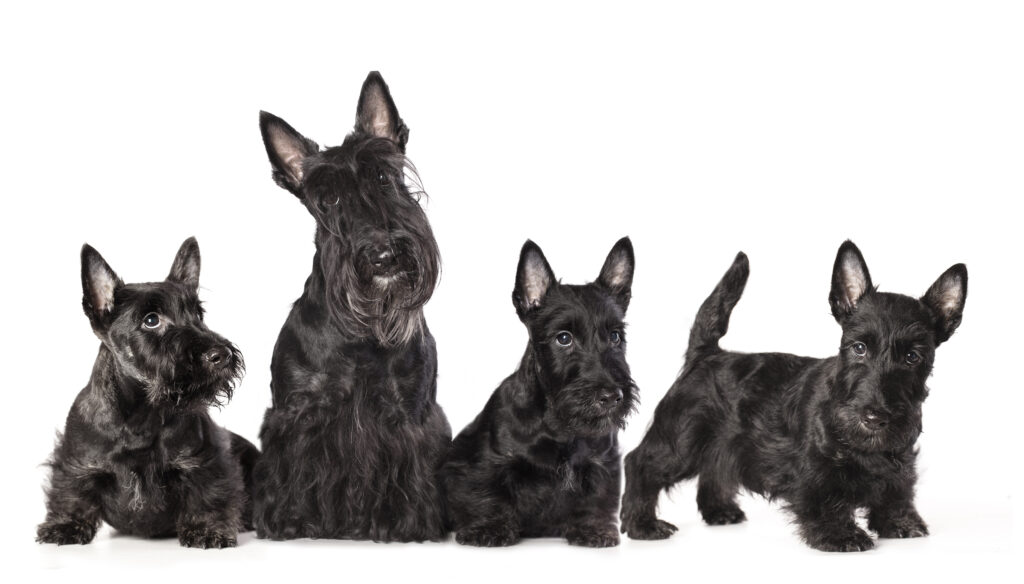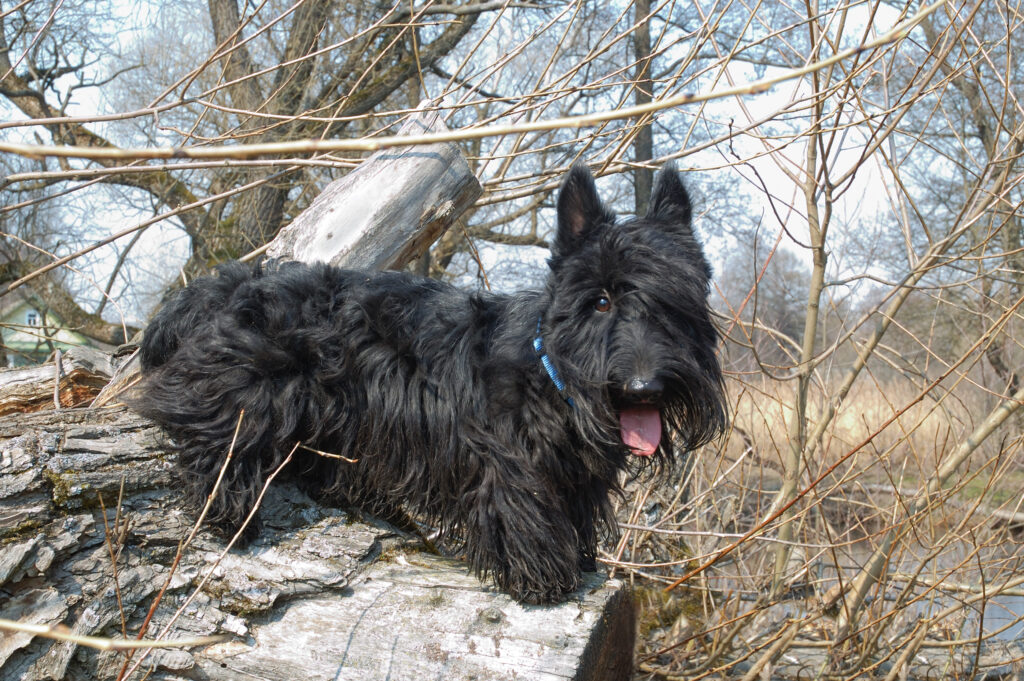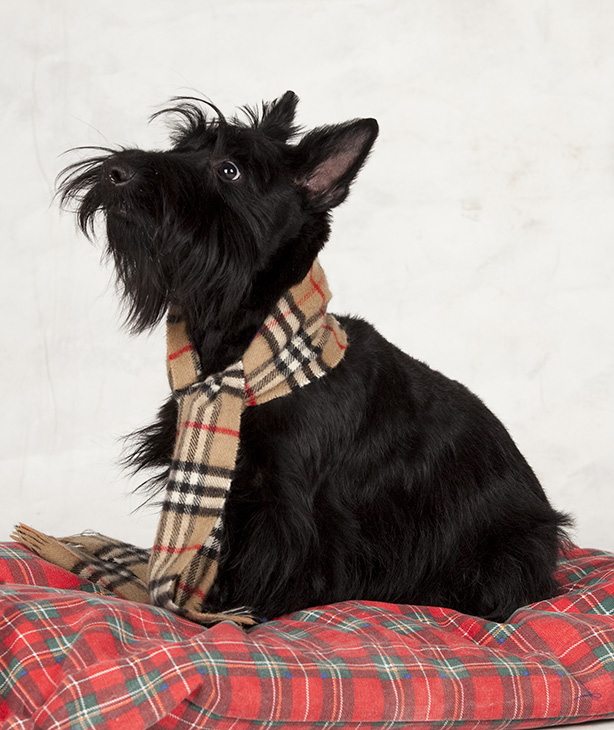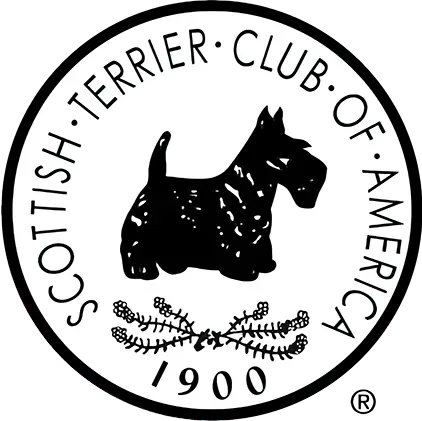What You Should know
If you’ve been owned by a scottie – then you know, but for anyone who has not previously had a Scottish Terrier, we highly recommend you visit some STCA breeders and meet Scotties and their owners. A trip to a local dog show is a great idea (it is best to talk to the person showing a dog after they have shown because before hand – they can be quite busy getting ready).

Scotties are Different
They are independent and strong willed, sometimes aloof and certainly intelligent. At the same time, they are sensitive and can be very attached to their owners. The Scottish Terrier is happy inside or outside, but will be happier with you than alone. A secure place in a home with human companionship and understanding are essential to his well-being, as well as his happiness.
Training Challenges
Scotties can be a challenge to train, not because they are not quick and intelligent, but because they may have a different ‘opinion.’ They react much better to positive re-enforcement training techniques. Scotties may get bored during extended training – so they will do better with short, positive and fun, lessons.
Outside Rules
Scotties must be in fenced yards – they have a very strong hunting instinct and will go after anything they consider prey (including a dog much larger than they). Except for very special cases – like working in Earthdog, Obedience or Agility – your scottie should always be on leash. This is not a dog that is scared to explore. In the dog park – scotties are not a happy go lucky, get along with anybody, dog. They will not back down from an aggressive dog.

The Scottish Terrier
is a Big Dog
in a small package
Kathleen J. Ferris describes how people should and should not approach Scotties and does so from three perspectives: Owners, breeders, and judges.
For your consideration
important information
Personality
Children
Exercise & Play
Barking
Boredom
The Yard
Home Alone
Other Pets
Grooming

Scottie Health
Training a Scottie
Training should start as soon as you bring your new puppy home. Scotties require consistency, boundaries, positive reinforcement and loads of patience. Don’t encourage behaviors in your puppy that you won’t accept from an adult, such as chasing or biting hands or feet, jumping up, getting on furniture, digging or barking. Behaviors that seem cute now may not be so adorable when your puppy is a full-grown Scottie!
Never, ever punish your Scottie puppy after calling him to you, for any reason; Scotties have long memories and next time you want your puppy to come to you, he’ll ignore you. Use a crate to assist with house training, but remember that puppies can only hold their bladders for a few hours at a time before needing relief. The STCA encourages Scottie owners to participate in activities such as agility, flyball, earthdog (terrier hunt tests), rally obedience and much more, because Scotties can learn anything if you are consistent and positive.
Since Scotties don’t respond well to punishment- or correction-based training, the best type of training class for your puppy will be one based on positive reinforcement. You can find training clubs in your area at the AKC website (Training Resources) and may want to enquire about positive reinforcement trainers.

Grooming a Scottie
The Scottie is similar to most other terriers in having a coat that grows continuously, unlike many other breeds in which each hair grows to a certain length and then drops out, or sheds. As a result, the Scottie is essentially a non-shedding dog and a Scottie owner’s home and clothing are virtually free of scattered dog hair. The other side of this coin, however, is the dog’s need for regular grooming.

A dog with an expected career in the show ring requires specialized and careful grooming on a frequent basis. However, a companion pet does very well with a schedule of clipping every 2-3 months, although this timing can vary from dog to dog, depending on the type, density and growth rate of the coat. Clipping a Scottie coat is a skill that any dog owner can learn without too much difficulty, but every area also has competent pet groomers who can handle this task if it doesn’t interest the owner. Beyond occasional bathing and clipping, the Scottie also appreciates gentle brushing on a regular basis, to keep the longer furnishings untangled and as an excuse to bask in his owner’s attention.
